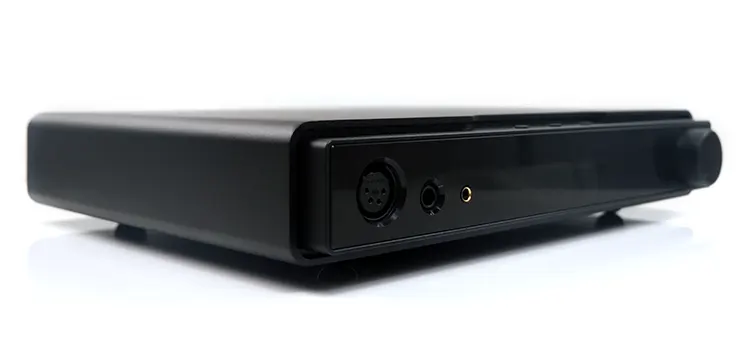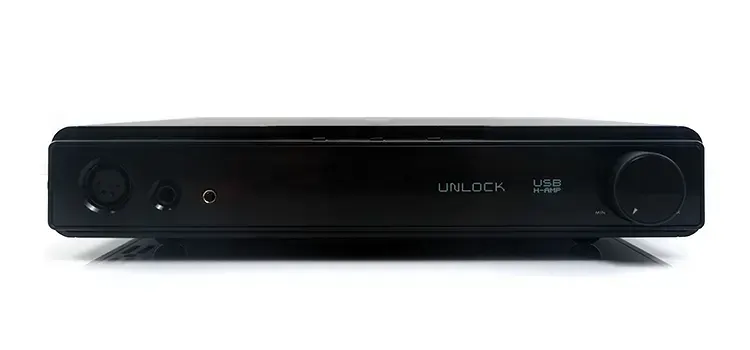We review the HIFIMAN Serenade, which is a new desktop R-2R HYMALAYA Pro DAC and integrated headphone amplifier with streaming capability. It is priced at $999.
Disclaimer: This sample was sent to us in exchange for our honest opinion. Headfonics is an independent website with no affiliate links or status. We thank the team at HIFIMAN for their support.
To read more about the HIFIMAN products we have previously covered on Headfonics click here.
Note, that this post follows our current scoring guidelines which you can read in more detail here.
The Serenade integrated DAC, headphone amplifier, streamer is another major release from the recent merger of HIFIMAN and Goldenwave.
The first review we did of this joint partnership was the excellent pure analog preamp and headphone amplifier, the Prelude.
Priced considerably lower than the Prelude at $999, the Serenade does bring something a bit different to the table with its integrated HYMALAYA Pro DAC and streaming capability. Technically, you can stack the Serenade with the Prelude and have a complete desktop headphone or HiFi experience.
For those poking around AliExpress, you might find a “Red” or LE version of this unit at around half the price called the Jr. Note, this cheaper unit uses the lower-tier HIMALAYA LE DAC and not the PRO version inside the Serenade.
Tech Highlights
The HIFIMAN Serenade is a jack of all trades riding on the recent wave of ‘all-in-one’ solutions put forward by the likes of YULONG, FiiO with their K9 Pro ESS, and the more streaming-centric Shanling’s EM5.
This mid-size desktop unit offers Class A headphone amplification and pre-out as well as accepting an analog audio line-in, (SE). Decoding is via HIFIMAN’s in-house HYMALAYA Pro R-2R chipset, with a wired streaming capability through a LAN connection.
DAC
This is not the first time the Serenade has been commercially available. Before the HIFIMAN buyout, you could buy a version of this unit under the Goldenwave brand except back then it used a delta-sigma ES9038PRO DAC.
The latest version uses HIFIMAN’s own HYMALAYA Pro DAC which was launched a few years ago and now forms an integral part of all of HIFIMAN’s latest decoding solutions. The HIMALAYA Pro is an R-2R or resistor-based modular chipset that is discrete-designed and based on a new in-house FPGA algorithm.
It is slightly different from the classic rail design of other R-2R DAC solutions with its modular setup as opposed to being hard-wired into any board.
A more appropriate comparison is the classic Burr Brown PCM1704K, a multi-bit chipset HIFIMAN has used before in its portable R2R2000 series and a reference point for the HYMALYA DAC’s performance.
On this basis, the purported claim is that the Serenade HYMALYA Pro implementation is equivalent to two PCM1704k balanced connections, (a fully-balanced design).
It is also designed to work in tandem with an XMOS XU316 USB chipset and offers up to DSD256 and PCM 32bit/386kHz decoding rates via USB. You can get higher though by bypassing the XU316 and using the Serenade with an RJ45 LAN connection for DSD512 and PCM 32bit/768kHz capability.
The Serenade also offers traditional coaxial and optical input options at DSD DoP64 and PCM 32bit/192kHz.
Amplification
The Serenade amplification is based on a Class A design though not the same MOFSET topology of the Prelude. Instead, we have a discrete transistor amplifier circuit with no coupling capacitors combined with a FET opamp implementation.
For PO and LO, you have an option to go with either a single-ended or balanced output though there is only provision for an SE input should you wish to feed the Serenade an analog signal from a 3rd party source.
The output power numbers are a touch below the Prelude but still quite ample for a mid-tier unit. You get up to 4w into a 32Ω load maximum from its balanced PO, down to 760mW at 300Ω which should be more than enough for more voltage-intensive headphones such as the ZMF Headphones Atrium of the classic Sennheiser HD 600.
Still, plenty of headroom should you opt for a single-ended setup at 2.8w into 32Ω down to 510mW into 300Ω with a slightly above industry standard fixed 2.2Vrms and 4.5Vrm SE and balanced for the Serenade’s LO output.
You can also switch to a volume-controlled pre-out option but I presume the maximum Vrms is unchanged in this mode.
Design
The Serenade shares a very similar design language to the Prelude albeit with a slightly smaller form factor. This is a low-profile and relatively deep desktop unit with a reasonable 2.9kG weight, a lot of which comes from its built-in 50W toroidal transformer.
The chassis is a very solid and flex-free anodized CNC-machined aluminum in all-black save for its attractively extended front panel which looks to be a glass or a Perspex finish housing a well-lit LCD screen. Not quite as grandiose as the Prelude LED design but still quite legible.
The housing does have an attractive, curved design as opposed to chamfered or edged making it a comfortable unit to hold and move around in the hand. It’s a minimalist look with no noticeable panel joins or exposed screws. The only noticeable screws are on the rear panel and underside out of sight.
Controls are relatively small and positioned in a relatively discreet manner on the top of the extended front panel making them easily accessible. This positioning does, however, make the Serenade more inclined to be the top unit in any stacked system as a unit on top of it will make the controls far less accessible.
One final note is the base with its four curved rubbery feet. they grip very nicely but just be careful they are secured on the base properly when unboxing as they are stuck on rubber feet rather than integrated into the base of the unit.
I/O
All the digital inputs and analog LO outputs, including the main power switch, are neatly arranged on the rear panel with the analog PO accessible from the far left of the front panel.
You have options for balanced and SE output with one additional analog SE input. Would I have preferred an additional balanced input? Absolutely, but quite a lot of these all-in-one devices have no analog input at all meaning no ability to bypass the DAC. At least you have that choice here.
For digital inputs, you have a mix of traditional and modern with the inclusion of coaxial, optical, and USB as well as an RJ45 port for LAN connectivity.
There is one additional narrow slow beside the RJ45 socket that may give you pause for thought because it is not actually in the manual or even the diagrammatic outline of the unit’s functionality. It is a small memory card slot labeled as OS which will allow you to flash the firmware of the Serenade when required.
On the front, you have a mix of XLR 4-pin and 4.4mm for balanced output and a single 6.43mm in-between for SE connections.
Physical Controls
If you have used the Prelude then the Serenade physical control suite will offer a degree of familiarity.
It is the same style of small triple-button controls though housed on the top extended front panel rather than on the front panel itself. Even the options for two of the buttons are the same, namely input and output modes.
The central switch changes from gain to select with the ability to control the screen brightness or, keep the streaming power supply always on or turn it off.
The input option will round-robin all your compatible digital inputs with the output suite offering the same access flow between the line-out, pre-out, and headphone amplifier.
All options will clearly show on the LED display but will also state ‘unlock’ if there is no incoming signal. Once a signal is received it will show the signal format and sampling rate.
The volume pot spec is not listed in the Serenade manual but I presume it to be the same Alps RK27 “Blue Velvet” potentiometer used on the Prelude.
Packaging & Accessories
Like with the Prelude, the Serenade comes packaged in the now familiar brown cardboard packaging system with a vinyl sleeve indicating the unit inside the box.
Though nowhere near as heavy as the Prelude, it has the same packaging design on the inside with copious amounts of black foam protecting the unit and a small accessories box that sits on top of the foam packaging.
Accessories are also a bit sparse but slightly better than the Prelude with the inclusion of a power plug and a 1m USB-B to USB-A cable to get you hooked up right out of the box.
The supplied black accessory box does have several QR codes which you can scan for your basic 12-month warranty as well as an additional six months if you follow HIFIMAN on social media giving you 18 months in total which is pretty decent.
Click on page 2 below for our sound impressions and recommended pairings.








